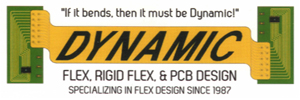How do you gauge an electronic PCB board? All the electronic devices, such as laptops, computers, transistors, mobiles, and even aeronautics, are completely dependent on it. They are soldered on the electronic board or embedded in what is chiefly called a substrate. The board has two copper layers, based on which they are categorized into two parts—single-sided and double-sided. “FR-4 glass epoxy” is the main insulating substrate used in the board. Electronic boards are extensively used in the electronic industry.
Specifications and Designing of Electronic PCB Board
- As mentioned above, electronic PCB boards are an indispensable part of the electronic industry; they have made people’s lives easy-going by being embedded in electronic appliances and gadgets. Although there are alternatives to these boards, such as ‘point to point construction,’ printed circuit boards are extremely useful for various kinds of production needs.
- Basically, PCB boards are available in a large range of specifications and can be customized according to your specific need. They require design effort on the part of the manufacturer to get the right kind of circuit. In the long process of electronic board design, PCBs are more effective and affordable than other wiring components. If the board does not have any component embedded in it, it is called an etched wiring board. At present, the PCB industry is a billion-dollar industry with many manufacturers and businesses involved at varying levels.
Advantages of Using Electronic PCB Boards
- Quality Assurance: In today’s competitive marketplace, all consumer electronics manufacturers do not have the resources, quality systems, and test equipment to guarantee the quality of their PCBs. On the other hand, PCB manufacturers use a large variety of quality procedures and systems to ensure quality assurance. In addition, they have the business relationship to procure top-quality electronic components.
- Value of Extensive Experience: Outsourced PCB services have extensive experience in mass-producing PCBs at the very best prices, even for tight deadlines. This value cannot be underestimated.
- Product Design Improvements: Sometimes, PCB services include electronic design services as part of their assembly prices. These design services verify electronic designs and give suggestions on PCB improvements that transform into better quality products at a lower cost.
- Cost As Per Unit Benefits: A consumer electronics OEM draws benefits from “economies of scale” by getting the capital investments made by a PCB Service in equipment, facilities, and personnel to yield reductions in price per unit, which can make them more competitive in the marketplace.
- Less Capital Investment: Assembling PCBs in-house requires a huge capital investment in manufacturing facilities, machinery, and lines, as well as training and hiring of qualified personnel. As a result, it can be a long return on investment. Using an outsourced service just makes economic and financial sense.
How to Find a Trusted PCB Manufacturer?
To find a trusted PCB manufacturer, you need to contemplate the following tips:
- Capabilities: Ask the manufacturer whether it deals in certain kind of PCBs and offer PCB prototype assembly? In addition, you need to know whether the manufacturer handles all sorts of verticals related to the industry and they are capable of producing PCBs in quantities as required. Consider their specific capabilities and services that make them apart from others.
- Expertise: Bear in mind that all PCB manufacturing services are not the same. Therefore, expertise is an aspect you should not compromise with. Also, you need to know their client base because that can give you lots of information about the kind of work they have done so far. For instance—if a manufacturer has worked with clients in various fields—medicine, aerospace, and telecommunication, they will definitely have more experience than other manufacturers.
- Quality Tests and Pricing: PCB manufacturers are expected to behave honestly and transparently with their clients in regard to quality tests. In addition, the pricing should be as flexible as possible.
At Dynamic FPC Design, Inc., we have been serving the flexible printed circuit, rigid/flex, and rigid PCB industries since 1992. We have twenty-five years of circuit design experience, and our focus has always been on guiding and motivating our customers through the maze of electrical and mechanical issues that hover the manufacturability, test-ability, and assembly of flex and rigid PCB. We also provide engineering assistance to both fabricators and OEM’s that have intermittent design requirements, eliminating the need for a costly “in-house” design team.
Briefly Put!
By now, you must have gained sufficient information about electronic PCB boards and how they can be useful to you in various fields. Indeed, it is a boon in the scientific era.

